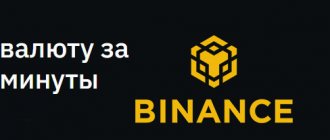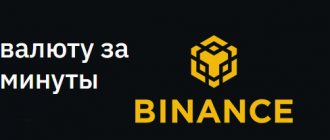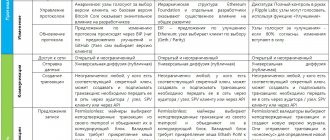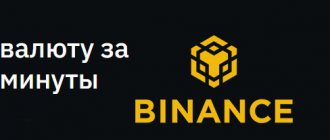One of the projects that you will inevitably stumble upon when attending blockchain conferences and following blockchain news is Hyperledger developed by the Linux Foundation.
The Linux Foundation launched the open source blockchain project "Hyperledger" back in 2015. The project is important in the world of blockchain.
With many different modules, small companies have many options for integrating blockchain applications.
While it's relatively easy to understand cryptocurrencies like Bitcoin and even Ethereum, the Hyperledger initiative is much more difficult to understand.
Later in the article we will tell you what Hyperledger is, how it works and what it is for!
Hyperledger: What does this mean?
Hyperledger is something of a central hub for open improvement of industry blockchains.
Overall, it is a collaborative open source project created to develop and promote new technologies to the masses by implementing the functionality needed for an open, cross-industry distributed ledger standard. The platform includes people from all over the world and the company itself is an international project that deals with leading companies in the following areas: economics, finance, IoT (Internet of Things), logistics and manufacturing.
Hyperledger does not support or promote Bitcoin (BTC), Ethereum (ETH) or any other cryptocurrencies or tokens, but the platform works with blockchain technology as one vast ecosystem. The founders of Hyperledger have repeatedly emphasized that their project is not an ICO and they have no intention of issuing their own cryptocurrency. This is a technology platform for implementing blockchain and smart contracts. Members of the Hyperledger community develop projects specifically as information products.
All projects are based on a modular structure that allows you to add or remove the necessary modules depending on user requests.
History of the project and its team
The Hyperledger project was announced at the end of 2015, and the final version of the board of directors and founding team was presented in March 2016. The board of governors currently consists of twenty-one people, led by Blythe Masters.
The Leadership Committee is the executive branch of Hyperledger and consists of more than 10 members, most of whom have gained vital skills working across multiple industries. In addition, there are also experts from technology companies such as IBM and many other IT giants. Hyperledger members are professionals in their field, for example Richard Brown and Tamas Blumer have extensive experience working with blockchain, helping companies implement new technologies in their business. For these participants, Hyperledger not only provides technical education and software for blockchain structures, but also provides various communications with prominent figures in the industry.
Currently, Hyperledger members include a large number of reputable companies from around the world, many of which are leaders in their industries. These are technology giants such as Airbus and Daimler, Intel, IBM, mobile phone developers such as Huawei and Samsung, financial and economic enterprises in the ranks of American Express and one of the largest banking institutions JP Morgan Chase.
Windows vs Linux – now with blockchain
The possible confrontation between the two conglomerates with the accession of Microsoft to R3 has acquired another interesting feature. Remember who is the organizer of the Hyperledger project? None other than the Linux Foundation, a non-profit foundation whose one of its goals is the development and promotion of free software.
Microsoft made the right strategic decision by waiting for the right moment and joining R3 - there are no potential competitors from the IT sector, and the financial opportunities are much greater.
On the other hand, the Linux Foundation has done a great job of creating a universal platform that covers all blockchain capabilities and has the potential to become a global standard over time.
Will we see Hyperledger fans writing on forums and social networks “R3 must die”? Maybe. Will there be a winner in the next battle, or is this fight destined to be eternal?
Goals and Objectives of Hyperledger
The founders and leaders of the project are confident that the Internet in general and blockchain in particular are the breakthroughs that can significantly change and improve our future.
Blockchain opens up enormous opportunities for creating transparent, falsification-proof business processes, legal documents and financial transactions.
According to Hyperledger developers and analysts, markets have long needed tools that can simplify and reduce the cost of data exchange, financial transactions, registration processes and other integral components of management and business. Blockchain, based on open source and decentralization, can meet these demands for transparency, reliability and security.
Overall, the ultimate goal of the Linux Foundation project is to coordinate the activities of stakeholders, software developers and companies belonging to different industries on one platform, as well as to promote cross-sector collaboration:
- In the financial sector, the use of this technology can help simplify settlements, increase liquidity, increase transparency, and explore new products and markets.
- In medicine, the use of blockchain technology helps to unify disparate processes, increase the flow of processed data, reduce costs and improve the quality of patient care.
- In the logistics and delivery system, it allows you to track the order of supply of goods, the sources of origin of goods, ensure their authenticity, block counterfeits, and avoid conflict situations.
In short, the Linux Foundation project is dedicated to coordinating stakeholders, software developers and companies belonging to different industries on one platform, and promoting cross-sector collaboration.
Officially, Hyperledger's goals and objectives are as follows:
- Creation of a database based on distribution technology to support transactions carried out by business entities.
- Providing a neutral and transparent infrastructure to meet community needs, managed by technical and experienced management personnel.
- Building a professional community that strives to improve blockchain and distributed databases.
- Educational work on the opportunities of the blockchain technology market.
- Promoting community ideas and tool compatibility with other platforms.
Network persistence
A decentralized environment provides an orderly record of information for a blockchain application. Each transaction results in a key-value set that is case bound. It can be created, updated or deleted. An immutable trust source for v1.0 is added to the node file system, which also has a built-in LevelDB module.
LevelDB has a default underlying data base and supports key queries, compound key queries, and key range queries. If you need complex, rich queries, CouchDB has you covered and supports the core capabilities of LevelDB by adding full queries, data-rich queries. With additional document database support such as CouchDB, JSON content becomes fully queryable, the data model is compatible with the existing key/value programming model. As a result of all this, application changes are not required when modeling code data as in JSON when using CouchDB.
This JSON format helps minimize the work required to create simple reports and perform auditing functions. For example, in supply chain scenarios, you can use a JSON document style to display specific data for products and transportation objects. You can easily prepare a product report for the different locations and transport facilities that were used to deliver the product to its final destination.
Features of Hyperledger technology
Now let's see what the platform offers:
- Hyperledger allows you to create a private rather than public blockchain
- There is no need for mining or issuing tokens. Validating nodes independently notify each other about operations, reach consensus and create new blocks.
- Flexible configuration of network access rights, the ability to create private systems for obtaining access blocks - outsiders will not be able to obtain data from them.
- Confidential transactions are only viewable by selected users who have the required encryption keys.
- Large selection of available programming languages: C++, JavaScript, Python, Golang, Java.
Hyperledger can be used to create a general-purpose blockchain, while competing solutions are designed for specific tasks:
- Ripple is an organization of payment systems.
- R3 CEV - traditional transactions and agreements.
- Ethereum - creating a virtual machine for using smart contracts
Hyperledger Frameworks
All projects are based on a modular structure, which allows you to add or remove necessary modules depending on user requests.
Hyperledger Sawtooth
Sawtooth technology is an innovative, modular platform for creating, using, and running distributed ledgers. The focus is on flexible use across different business areas. The platform supports custom data models to create copies of the current state of the ledger, transactions to change the state of the ledger, and negotiation of transaction confirmation methods.
Sawtooth uses a new concept called transaction family. Sawtooth users can create their own specialized "transaction family" with unique data models and transaction languages. To make initial use easier, Sawtooth offers three built-in transaction families that address the most common use cases and provide a ledger ready for full use in the digital asset marketplace.
Features of Hyperledger Sawtooth
- Implementation and use of smart contracts to automate business procedures and vote on changes to the blockchain configuration (for example, to add new participants and smart contracts).
- An advanced transaction execution engine that provides parallel transaction processing to speed up block generation and verification
- Supports integration with Ethereum platform tools and the ability to run third-party smart contracts.
- The ability to update or replace the consensus protocol as the distributed network grows. For example, you can switch to more scalable consensus algorithms as they become available.
- Ability to create smart contracts using a variety of programming techniques and languages, including Go, JavaScript, and Python.
Hyperledger Iroha
The project was mainly developed by Japanese organizations, in particular Hitachi and Soramitsu, as they contributed greatly to its creation. The ultimate goal of the platform is to develop other Hyperledger environments such as IBM Fabric and Intel Sawtooth Lake.
Using Iroha, commercial corporations can create and manage conventional digital currencies, such as fiat or cryptocurrencies, or complex assets such as certificates, patents and other documents confirming intellectual property rights.
Typical use cases for Irohi include the following operations: The platform allows the creation of documents proving the identity and authenticity of diplomas issued to individuals by universities and institutes.
In addition, in the Iroha ecosystem, with various digital avatars (a graphical representation of the client or his psychological portrait), real assets can be created and moved with low transaction fees or even without any fees.
For example, a used car owner can create a digital asset and then register ownership of it with multiple signatures on an account. Once the other party is interested in the offer, they accept the offer, complete the transaction by transferring the currency to the current owner, and take ownership of the car.
Another area where Iroha's features can be used is identity management for Know Your Customer (KYC) requirements, which are already mandatory in many projects. Clients do not need to submit documents, as is usually the case in most projects. Instead, they can create the necessary identification on a chain of nodes, which can be applied to by various qualifying institutions that follow the KYC procedure.
Iroha provides fast service as well as a comprehensive combination of code libraries for IT professionals to create robust application development, secure monitoring, asset management and modular design architecture to take the blockchain ecosystem to the next level.
Iroha differs from other widely used blockchain-based projects, such as the world's largest cryptocurrency Bitcoin and its competitors Ethereum or Ripple, as the latter operate like diskless ledgers in that they allow you to join and grant access to any network platform.
Hyperledger Burrow
Intel and Monx developed Hyperledger Burrow five years ago in 2014, the main idea of which was to release the project for the needs of commercial companies so that they could take advantage of smart contracts.
Barrow is code based on the Ethereum platform, which provides a first-of-its-kind blockchain client module with a smart contract interpreter.
Monax CEO Casey Kuhlman believes that Burrow will enable companies to build applications with a wide range of features and potential services that are not possible on non-smart contract platforms.
Importantly, Burrow is expanding its list of strategic partners and one of its most important allies is the Ethereum development team, which includes specialists from the Enterprise Ethereum Alliance (EEA).
Hyperledger Indy
Hyperledger Indy is a distributed ledger used for decentralized identity. It is a collection of tools, libraries and reusable components for creating and implementing independent decentralized digital identities that are compatible with various administrative domains, applications, etc.
Blockchain-identity startup team Evernym launched the project in early 2022 amid the ongoing Facebook user data leak scandal. The Hyperledger Indy code, like other consortium projects, is published on GitHub.
Hyperledger Fabric
Hyperledger Fabric is the best framework for creating programs and specialized business agreements on the blockchain.
Hyperledger Fabric is the basis for decentralized systems where all clients have identities. If you want to implement a decentralized network, you should find out whether your company needs blockchain to comply with data protection regulations.
Much of the Hyperledger Fabric in the financial and social services sectors is subject to data protection laws. In addition, the project was launched by the company for organizations, so entry is “by invitation only.” A network participant must obtain a certificate and be identified, but different participants may be granted different rights, restrictions, and benefits.
Access to the information
Due to competition, privacy laws and regulation, organizations are dictating the need for privacy of certain data elements, which can be achieved by separating the data onto a blockchain. Channels supported in Hyperledger Fabric allow data to be transferred only to the parties that need to use it.
For example, many financial services companies express concern about competitors seeing even the number of transactions being processed. Some financial institutions do not consider cryptography a “sufficient” measure to protect their data. Channels help ensure data can be separated, where only those who need to know the data will see the number of transactions and the data itself.
Fabric's decentralized ledger and smart contract platform enable private channels. If you have a large chain network and only want to share data with certain parties, you can create a private channel with only those participants. Moreover, not every transaction may be visible to every network user. Hyperledger Fabric allows for private transactions, something that cannot be done on Ethereum, which promotes transparency. For certain highly regulated industries, such as healthcare, this is clearly a very big benefit.
Smart Contracts: Like Ethereum, Fabric allows the use of smart contracts called “chaincode”. Smart contracts are developed at the highest level.
Not every blockchain needs to be anonymous and open. It all depends on the purpose of its use. Hyperledger Fabric allows all network participants to have known identities. Decentralized blockchains are exactly what financial companies, and even more so the healthcare industry, need.
For example, take the case of a mortgage company using blockchain. Mortgage information cannot be publicly published. The information requires parties to be able to identify themselves online for authentication.
Ethereum or Hyperledger Fabric: what to choose?
To better understand the capabilities of Hyperledger Fabric, you can compare it with the Ethereum network. The hallmarks of Ethereum are decentralized programs (applications or dApps), smart contracts and a public blockchain. In general, they are aimed at meeting consumer demand or the so-called B2C market.
Meanwhile, organizations wishing to develop blockchain applications that provide privacy and decentralization are guided by Hyperledger Fabric. It is best suited for developing programs based on the idea of blockchain and creating smart contracts, supporting security recommendations and consensus. Fabric's modular design provides flexibility and is aimed at enterprises that want to streamline their workflow using blockchain innovation.
Hyperledger, in collaboration with its partners, primarily works on transaction-based applications. Despite this, Ethereum is also targeting enterprise clients. As an example, we can look at Quorum, created and run by JP Morgan. Quorum, a legal product based on Ethereum, is what is called a fork of the Ethereum blockchain.
Launching in early 2022, the Ethereum Enterprise includes more than 20 Fortune 500 companies, as well as enterprises, innovators, technology providers, and Ethereum experts. Among the most notable participants are IT clusters Intel and Cisco, consulting company Accenture and automobile giant Toyota.
Hyperledger Tools
Hyperledger has several application projects that aim to make access to blockchain development easier and more productive.
IT specialists primarily use tools, and the projects themselves are used regardless of the company's specialization.
Caliper
Hyperledger Caliper is a planned blockchain that gives you the ability to evaluate the execution of a specific system. Caliper can generate reports containing performance metrics such as TPS (transactions per second), transaction latency, asset utilization, etc. The purpose of developing this tool is to enable users to evaluate and select a particular project based on the specified parameters.
Hyperledger Caliper was represented by IT professionals from Huawei, Oracle, IBM and many other influential players in the technology industry. Educational institutions such as the Hungarian University of Technology and Economics also played an important role in the development of Caliper.
Cello
This tool supports multiple networks on top of various infrastructures such as bare metal and other container platforms.
Hyperledger Cello aims to popularize its system to the user so that customers can join in its benefits, such as reducing the effort required to create, manage and terminate the chain.
Composer
Hyperledger Composer is a kind of hub with an open set of tools for convenient use of the blockchain. With this platform, blockchain technology can be easily integrated into existing business systems.
It is a blockchain and smart contract creation tool for businesses, allowing them to build their own applications via Hyperledger Fabric.
Explorer
Hyperledger Explorer is a blockchain research tool developed by members of the consortium and designed to create user-friendly web applications. Using Explorer, you can view all the information stored in the blockchain: transactions, blocks, as well as any other data stored in the ledger. This tool is in its infancy.
Quilt
Hyperledger Quilt enables interoperability between ledger systems using the Interledger Protocol (ILP), which allows unlimited transactions between different ledgers using cryptographic escrow and a specialized two-phase confirmation protocol.
The Interledger protocol allows you to connect different blockchains using atomic permutations. This tool is also under development.
Ursa
This is a modular cryptographic library that is designed to provide developers with a separate toolkit to ensure blockchain security.
The project should prevent wasted time dealing with duplicate solutions, as well as improve security by simplifying analysis and reducing the likelihood that less experienced clients create their own risky environments.
It is also accepted that Ursa will conduct a dedicated evaluation of the complete cryptographic code and improve cross-stage similarity as projects use the standard library.
The library is divided into 2 small sections:
- The first concerns simple, standardized, modular cryptographic algorithms.
- The second is unusual to a certain extent. Examples of this include, for example, SNARK and aggregated signatures.
Ursa's code is written primarily in Rust, but the software will also work with all the languages commonly used in Hyperledger.
Z-Mix
This is a partner project of Ursa that adds support for certain cryptographic algorithms such as SNARK or aggregated signatures.
Links[edit]
- "Linux Foundation brings together industry leaders to advance blockchain technology - Linux Foundation". Linux Foundation
. 2015-12-17. Archived from the original on 2017-07-17. Retrieved April 28, 2022. - "Enterprise Open Source Blockchain Effort Takes Lead, Wins New Investment - Hyperledger". Hyperledger
. 2016-03-29. Retrieved April 28, 2022. - "Apache Software Foundation Founder Joins Linux Foundation to Lead Hyperledger Project". 2016-05-19. Archived June 10, 2016.
- "Hyperledger Linux Foundation Project Announces 30 Founding Members and Code Contributions to Advance Blockchain Technology". 2016-02-09. Archived from the original on February 25, 2016. Retrieved February 17, 2016.
- "The Hyperledger Blockchain Project Isn't About Bitcoin". eWEEK
. Retrieved April 28, 2022. - "Incubation Project Proposal: Joint DAH/IBM Proposal". Tamas Blummer, Christopher Ferris. March 29, 2016. Retrieved June 21, 2016.
- "hyperlink/fabric". GitHub
. Retrieved June 23, 2016. - "Hyperledger/sawtooth". GitHub
. Retrieved April 28, 2022. - "Hyperledger Sawtooth Lake Incubation Proposal". Mick Bowman, Richard Brown. April 14, 2016. Retrieved June 21, 2016.
- "Hyperledger releases Hyperledger Sawtooth 1.0, its second distributed ledger project". TechCrunch
. Retrieved May 28, 2022. - "Hyperledger Fabric 1.4 marks a very important milestone: first LTS release". JAXenter
. 2019-01-11. Retrieved May 28, 2022. - "Our Corporate Members". Linux Foundation
. Retrieved March 10, 2022. - Androulaki, Ellie; Barger, Artem; Bortnikov, Vita; Kachin, Christian; Christidis, Konstantinos; De Caro, Angelo; Enyeart, David; Ferris, Christopher; Laventman, Gennady; Manevich, Yakov; Muralidharan, Srinivasan; Murthy, Chet; Nguyen, Binh; Sethi, Manish; Singh, Gary; Smith, Keith; Sorniotti, Alessandro; Stathakopoulou, Chrysoula; Vukolić, Marko; Weed Cocco, Sharon; Yellick, Jason (2018). "Hyperledger Fabric: A Distributed Operating System for Permissioned Blockchains." arXiv: 1801.10228. DOI: 10.1145/3190508.3190538. S2CID 3863072. Quote journal requires |journal=(help)
- Salimitari, Mehrdad; Chatterjee, Mainak; Fallah, Yasser. "A Survey of Blockchain Consensus Methods for Resource-Limited IoT Networks". Computer Science Procedures. Retrieved October 30, 2022.
- Kotoski, Cali. "NBC Signs Blockchain Agreement". phnompenhpost.com
. Phnom Penh Post. Retrieved March 7, 2022. According to Martin Kendrick, founder of the Cambodian company, the technology will bypass ATMs and formal financial institutions for customers, allowing them to send and receive funds directly, while central banks and brick-and-mortar financial institutions can use it to streamline interbank lending activities. Cryptocurrency, Bitcoin and the Blockchain Community. - Bucci, Debbie. "Blockchain and its emerging role in healthcare, IT and health-related research" (PDF). U.S. Department of Health and Human Services, Office of the National Coordinator for Health Information Technology. Retrieved May 18, 2022.
- Bollen, Benjamin. "Imagine the Beginning for Burrow EVM as Sawtooth Transaction Processor". github.com
. Hyperledger. Retrieved May 18, 2022. - "Available SDKs". sawtooth.hyperledger.org. Retrieved November 23, 2022.
- Castillo, Michael Del. "Hyperledger Unanimously Endorses First Ethereum Codebase for Enterprises". Forbes
. Retrieved September 26, 2022. - "Measuring Blockchain Performance with Hyperledger Caliper - Hyperledger". Hyperledger
. 2018-03-19. Retrieved June 16, 2022. - "Hyperledger Cello - Hyperledger". Hyperledger
. Retrieved April 28, 2022. - "Hyperledger Composer - Hyperledger". Hyperledger
. Retrieved April 28, 2022. - "Hyperledger Explorer - Hyperledger". Hyperledger
. Retrieved April 28, 2022. - "Hyperledger Quilt - Hyperledger". Hyperledger
. Retrieved April 28, 2022. - "Hyperledger Ursa". Hyperledger
. Retrieved April 2, 2022.
Implementation experience
Large companies successfully use Hyperledger in their products.
- Visa Payments uses Hyperledger Fabric to power B2B Connect enterprise transactions to prevent fraud and speed up transactions.
- Japanese tech giant Hitachi has introduced a Hyperledger-based fingerprint payment and coupon activation method. The distributed ledger verifies such transactions as well.
- Oracle leverages the distributed ledger capabilities of Hyperledger Fabric for supply chain management.
- IBM Watson IoT Service provides developers with the tools to create IoT applications.
The number of projects for medium and small businesses is growing every day and this technology is finding its practical application in various fields: economics, logistics, medicine, retail and construction. Evrone used the open source Hyperledger solution to develop blockchain projects: Crypton trading bot and Trustlogics.
CONTENT
- 1 History and goals
- 2 Members and management
- 3 Known frameworks 3.1 Hyperledger Fabric
- 3.2 Hyperledger Iroha
- 3.3 Saw Hyperledger
- 3.4 Hyperledger Besu
- 4.1 Hyperledger caliper
Afterword
Blockchain technology has the potential to completely change how businesses operate if it is used widely and fully.
The Hyperledger platform is indispensable for companies that want to minimize time and money costs, as well as make their products and services more attractive, reliable and secure for the end consumer.
Of course, we are talking about large corporations operating all over the world. But we should not forget about small and medium-sized businesses. The Hyperledger blockchain will also be useful for them as a strategic plan for company development and making effective decisions.











